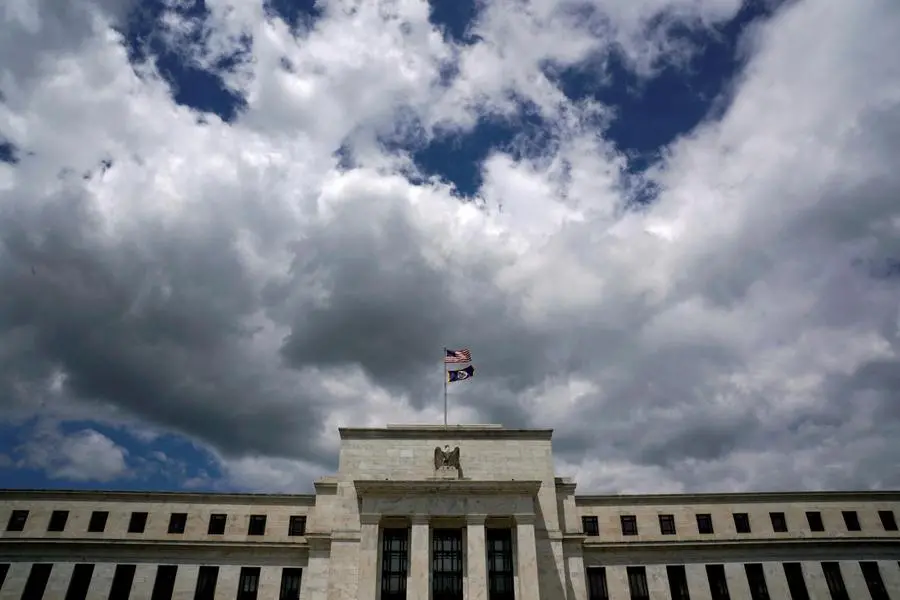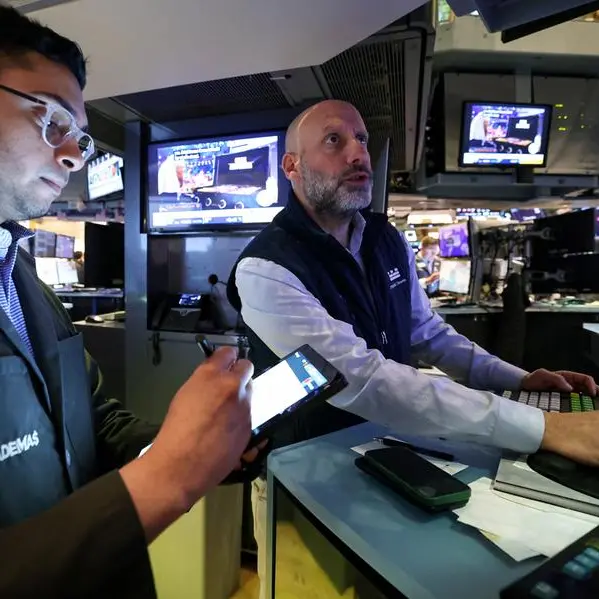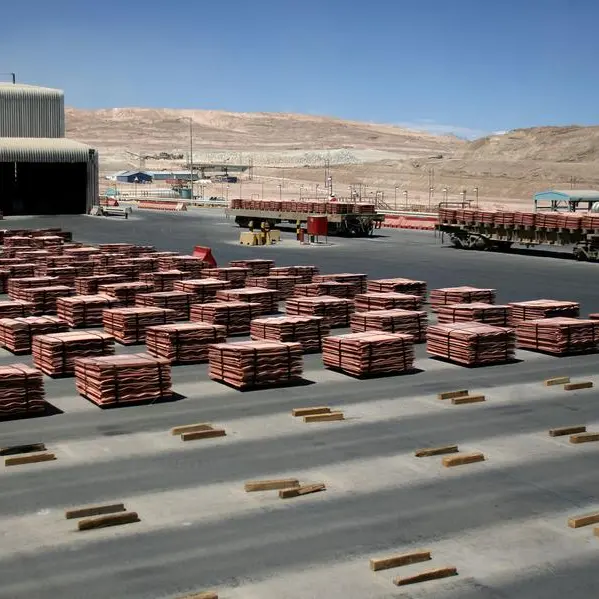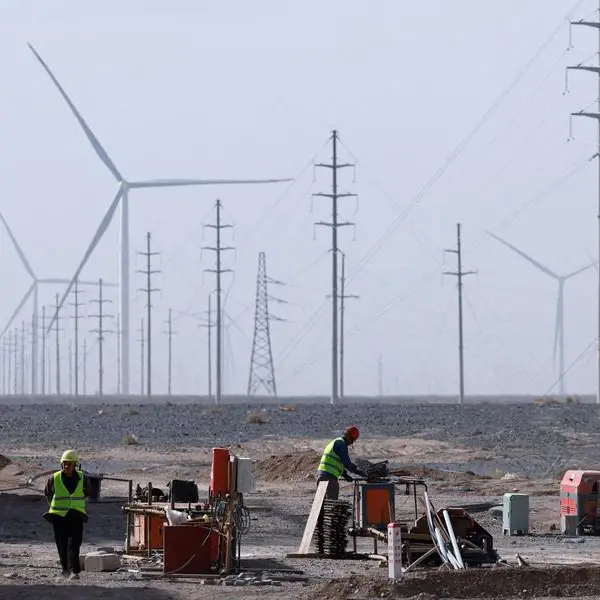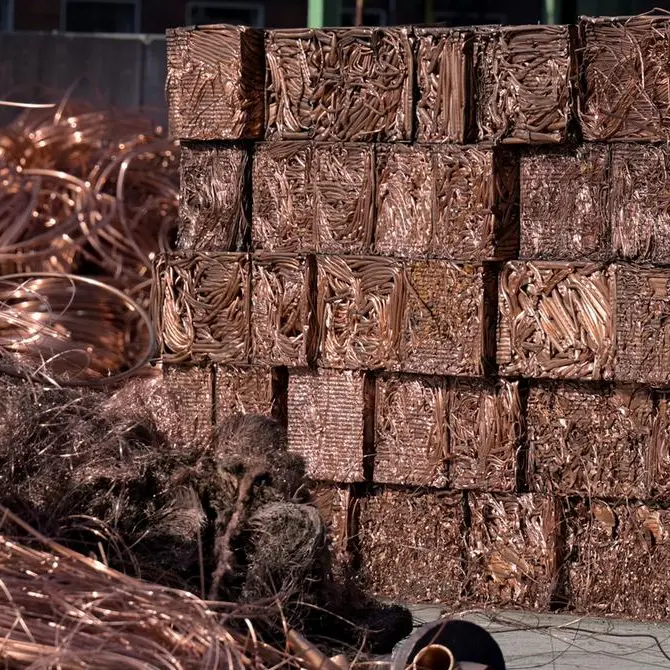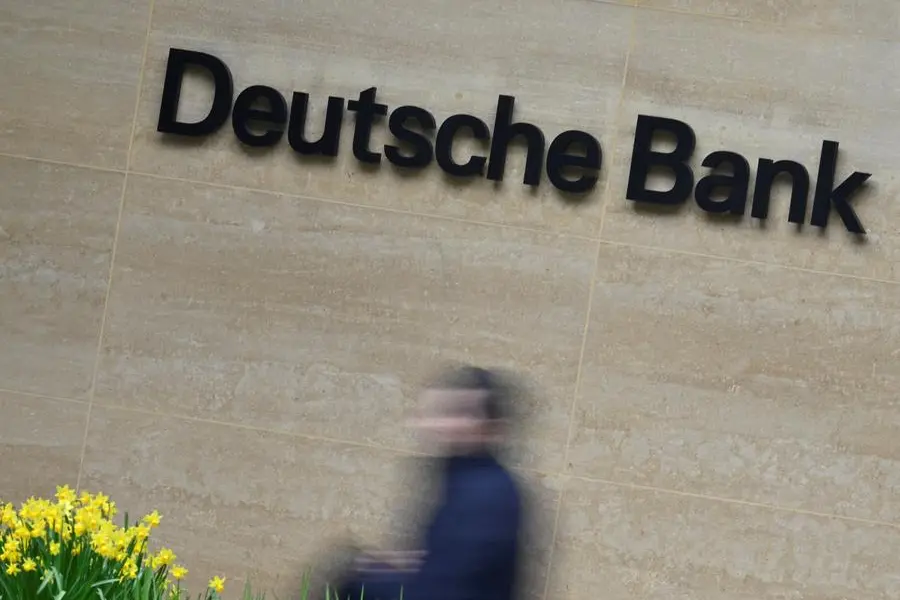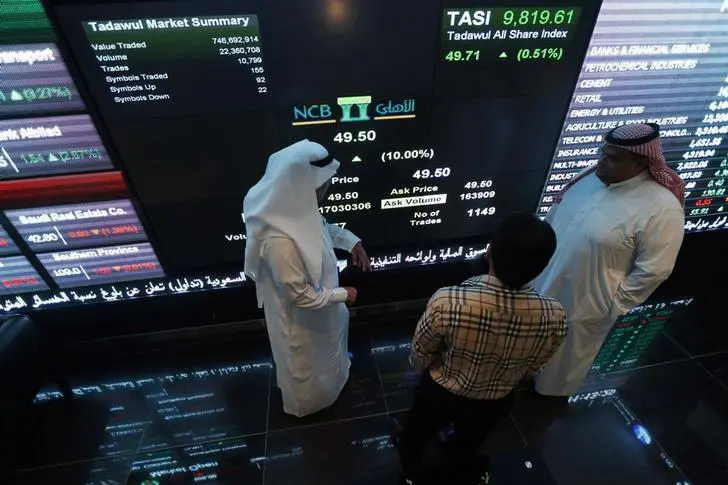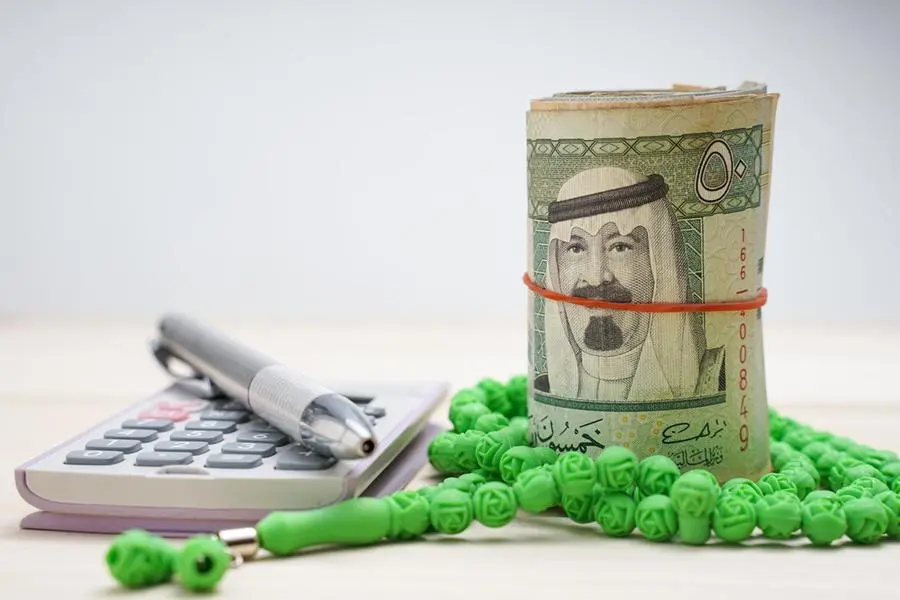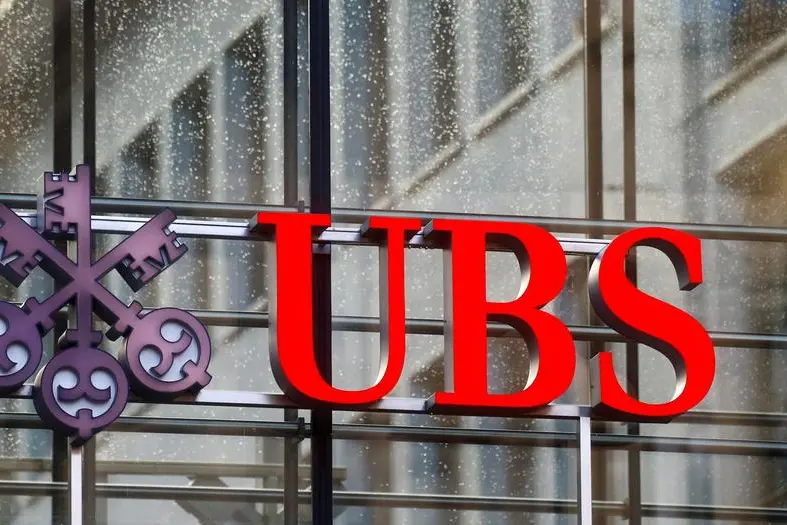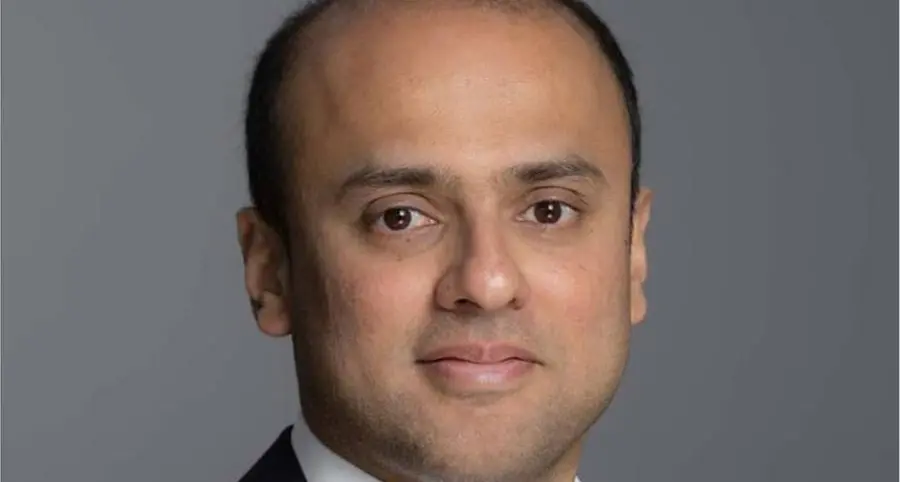PHOTO
FILE PHOTO: Flags fly over the Federal Reserve Headquarters on a windy day in Washington, U.S., May 26, 2017. REUTERS/Kevin Lamarque.
LONDON - The Federal Reserve's job is complicated and simple at the same time: hold the line on interest rates, even in the face of pressure, in order to keep long-term inflation expectations under control.
If the recently restive bond markets are to be believed, the Fed appears to be doing a pretty good job, especially at a time when unprecedented policy uncertainty is sending near-term inflation expectations spiking.
With average U.S. import tariffs set to surge to their highest level in decades and those on Chinese-made goods due to skyrocket, U.S. households' outlook for the cost of living in the year ahead has, unsurprisingly, climbed sharply.
The New York Fed's consumer survey for March showed the one-year inflation outlook jumping to 3.6% for the first time in 18 months. The University of Michigan's more recent equivalent poll for April saw the one-year inflation view soar to 6.7%, the highest such reading since 1981.
The medium-term outlook was messier, with three- and five-year takes from the New York Fed poll barely budging and Michigan survey respondents expecting five-year inflation to climb to 4.4%. Wide discrepancies in inflation views based on political affiliation further complicate things and inject ever more caution into all interpretations of public inflation perceptions.
But despite any household anxieties about tariff-induced price rises, long-term market-based measures of inflation expectations are actually falling back quite significantly.
The so-called breakeven inflation rate built into 10-year inflation-protected Treasury securities has fallen almost half a percentage point over the past two months to about 2.1%, so essentially back near the Fed's 2% target.
The five-year 'breakeven' is a touch higher at 2.2% but has also fallen back by around 50 basis points since February. And both rates are lower than they were at the start of year.
Meanwhile, the five-year, five-year forward inflation-linked swaps rate has followed suit to sit between the two.
There seem to be three basic explanations for these moves. One is the assumption that tariffs will simply generate one-off price hikes, not persistent inflation. The second is that the Fed's steely resolve is being heeded. And the third is the much darker view that the economy will suffer in the long-term from the trade war and that muted demand will rein in prices.
It may ultimately be a combination of all three.
THE DARKER THEORY
What's certain is that the global economic outlook has weakened substantially in recent weeks.
On Wednesday, the World Trade Organization slashed its goods trade outlook, predicting a 0.2% contraction this year from the 3% expansion forecast six months ago. Worse still, it said full decoupling of the U.S. and China - or an 81% drop in trade between the world's two biggest economies - could shrink global GDP by 7% on a longer-term basis.
The U.N. Trade and Development agency said global growth would slow to 2.3% in 2025, placing the world economy "on a recessionary path". Credit rating agency Fitch cut its 2025 global growth forecast to less than 2%, projecting the weakest expansion since 2009, outside of the COVID-19 pandemic shock.
What's the Fed to think?
U.S. central bank chief Jerome Powell seems in no mood to change his relatively hawkish tack.
On Wednesday, Powell claimed the economy was still "solid" and the Fed could wait for more clarity. "Tariffs are highly likely to generate at least a temporary rise in inflation. The inflationary effects could also be more persistent," he told the Economic Club of Chicago.
Fed Governor Christopher Waller broke ranks somewhat this week, offering a dovish take that contrasted with Powell and other Fed colleagues recently. Waller evoked memories of the post-pandemic "transitory" inflation debate by saying weak growth would ultimately trump one-off price rises.
But his other colleagues remain much more circumspect.
Atlanta Fed President Raphael Bostic spoke of standing pat because it remained highly uncertain where tariffs would land, let alone what impact they would have. "The fog has just gotten really, really thick," he said.
And others dwelt on the risk that the jump in short-term inflation expectations won't simply fade.
St. Louis Fed President Alberto Musalem said: "I would be wary of assuming the impact of high tariffs on inflation would be only brief or limited."
Minneapolis Fed President Neel Kashkari put the conundrum in the context of recent history. If the U.S. hadn't just lived though four years of high inflation, Kashkari said, he would be more comfortable seeing through a tariff-related jump.
"We should be very cautious about taking moves that could demonstrate a weakening, which I don't think is there, to the Fed's commitment to getting inflation down," Kashkari told CNBC.
So barring any serious financial market malfunctioning, the Fed's "cruel-to-be-kind" strategy looks set to stay, especially if long-term market expectations keep supporting it.
The nearly four Fed interest rate cuts that money markets have priced in for this year may yet prove overzealous.
The opinions expressed here are those of the author, a columnist for Reuters
(By Mike Dolan; Editing by Paul Simao)
Reuters
